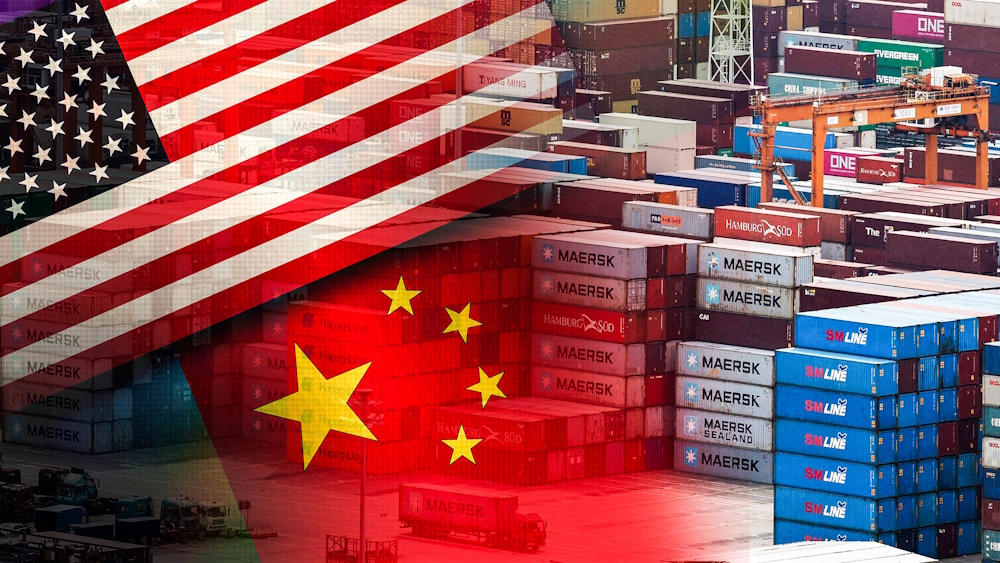
President Donald Trump has declared the imposition of an additional 100% tariff on goods imported from China, supplementing the existing 30% tariffs, with implementation set for November 1 or potentially earlier. The threat represents a significant escalation following months of a trade truce between the two nations. “The United States of America will impose a Tariff of 100% on China, over and above any Tariff that they are currently paying,” Trump stated. “Additionally, on November 1st, we will implement Export Controls on all critical software.” Trump’s announcement is linked to Beijing intensifying export controls on its essential rare earths, which are necessary for the production of numerous electronics. Consequently, Trump seemed to cancel a meeting with Chinese President Xi Jinping that was planned for later this month in South Korea. Trump’s initial message Friday, conveyed through a Truth Social post, in which he threatened “massive” new tariffs, was poorly received by investors as concerns of a spring déjà vu emerged, reminiscent of when tariffs on Chinese goods surged to an astonishing 145%.
Markets experienced a significant decline on Friday following Trump’s initial remarks, with the Dow decreasing by 878 points, equivalent to a 1.9% drop. The S&P 500 experienced a decline of 2.7%, while the technology-focused Nasdaq saw a more significant drop of 3.5%. Although Trump may not consistently follow through on his threats, there remains cause for concern among investors, consumers, and businesses. President Donald Trump is indicating a potential increase in tariffs on Chinese goods imported into the United States. The two largest economies exhibit a mutual dependence. The United States and China represent the two largest economies globally. While Mexico has recently overtaken China as the primary source of foreign goods imported into the United States, the American economy remains reliant on China for hundreds of billions of dollars in goods. Meanwhile, China stands as one of the leading export markets for the United States. Notably, electronics, apparel, and furniture rank among the primary goods imported by the United States from China. Trump has urged CEOs, particularly in the technology sector, to relocate production to the United States. However, he has moderated his stance in recent months as business leaders have appeased the president with declarations of substantial investments in US manufacturing, despite the fact that they still produce the majority of their goods abroad.
Shortly after imposing minimum 145% tariffs on Chinese goods — an effective embargo on trade — Trump issued an exemption for electronics, making them subject to 20% tariffs instead. The action represented, in numerous respects, a recognition that the Trump administration was aware of the economic distress caused by the elevated tariffs imposed on the US economy. In May, officials from the United States and China reinforced the interconnectedness of their trade relations by reaching an agreement to reduce tariffs on each other’s goods. China reduced tariffs on American exports to 10% from 125%, while the United States lowered its rates to 30% from 145%. Both countries’ equity markets experienced a rally as a result. Trump on Friday asserted that the trade hostility from China “came out of nowhere.” However, in actuality, it has been simmering for several months. For the United States, a pivotal aspect of trade agreements has been to guarantee that China will augment its supply of rare earth magnets. Despite several apparent breakthroughs, Trump has, in recent months, consistently accused China of breaching the terms. Trump initially reacted by imposing limitations on the export of American technologies to China, which notably included a crucial Nvidia AI chip.
Numerous restrictions were subsequently removed. Subsequently, the Trump administration declared its intention to implement fees on goods transported via vessels owned or operated by Chinese entities. China responded with a comparable strategy targeting American vessels that was implemented on Friday. In summary, Trump has clearly indicated that there are no bounds to the tariffs he is willing to impose on China, while Xi has exhibited a relentless approach in his methods of retaliation. However, Trump’s capacity to unilaterally impose tariffs may soon face limitations, as a significant case is set to commence in the Supreme Court next month. Xi, however, encounters no such limitations. Trump has announced tariffs on China amounting to 130%. The resurgence of the global trade war is now unmistakable.

